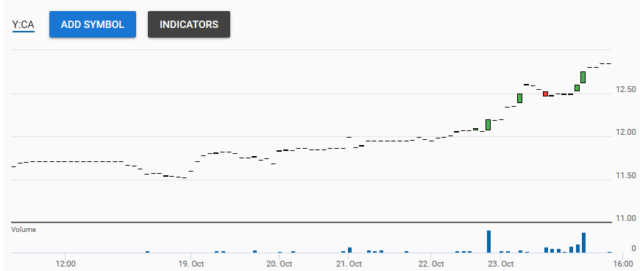By virtue of two mandatory share redemptions (post 1, post 2) and some other dispositions, my position in this company is a lot less than it used to be (which at one point was over 10% of my portfolio!). However, what is remaining is not an insubstantial sum as measured in dollars and cents and I also have some sentimental value with this company as I regard it as one of my best calls ever which I made public on November 2019. Indeed, it is my longest-dated portfolio holding.
Other than capital return decisions (which has reduced the company’s shares outstanding from 26.6 to 14.2 million), the other significant event appears to have happened on March 21, 2023:
On March 21, 2023, the Company was the target of a cybersecurity incident. The Company immediately activated its internal network of IT professionals and retained the services of cybersecurity experts to assist in securing its systems and to support its internal investigation. The Company also suspended its operations and IT systems to contain the situation.
As of May 10, 2023, the Company had restored all its operations and IT systems and has taken steps to further secure all systems to help prevent a similar occurrence in the future. The Company is working with its insurance providers to make claims under its policies.
In their Q2-2023 release, they stated when discussing their decline in revenues:
… (b) a cybersecurity incident which resulted in the Company’s operations and IT systems being suspended for approximately three weeks of the second quarter of 2023.
While this did not have a material impact on Q2 (I was jokingly thinking that the company is so old-school that it generates cash even when they don’t have any computers operating), it certainly had an impact on Q3’s metrics, which significantly underperformed the decline regression model I had.
Now that this incident is over with, presumably the company can get back to its regular decline.
The only difference is that instead of working with a base of 26.6 million shares outstanding, there is about 47% less shares out there to deal with.
Management explicitly wanted to get the last buyback out of the way in calendar 2023 because of the 2% buyback tax that was going to be imposed in 2024. It would suggest that future buybacks are unlikely – perhaps this is why the stock is edging down lower due to the lack of anticipation of future demand.
This is an odd case where a company has removed nearly half its shares outstanding, but the share price has actually decreased despite the underlying financial metrics being relatively stable (the graceful decline downward). The company continues to trade at less than 4x cash generation – if there is any hints that profitability will stabilize, this multiple will rise. This has always been the thesis and 2024 is probably a good a year as any to see if it occurs. If there was ever a case study to deal with a company that should just go private to alleviate itself from public company hassles and expenses, this one is it. In the meantime, the dividend yield is around 7.5%, so at least we’re being paid a few bucks to wait for the inevitable.
